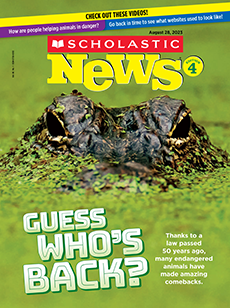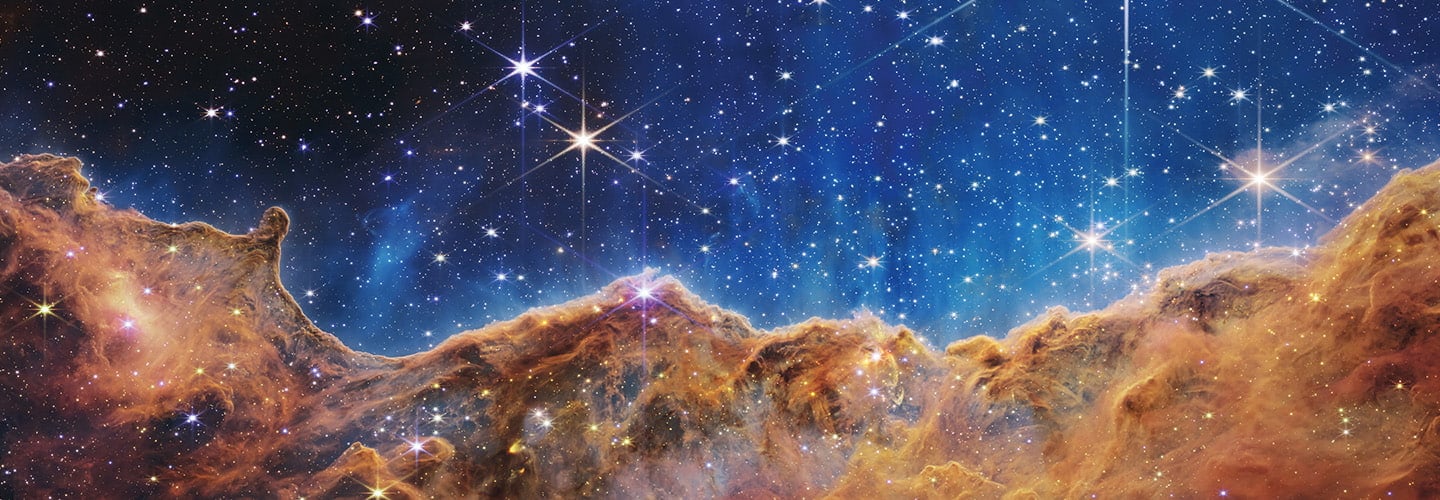What do faraway galaxies look like? That’s one of many questions scientists hope to answer with the James Webb Space Telescope. Launched in December of last year, it’s the biggest, most powerful telescope ever sent into space. In July, NASA, the U.S. space agency, released some of the stunning first images taken by the telescope. They include photos of distant galaxies and newly formed stars.
This photo shows an area of the Milky Way called Carina Nebula. A nebula is a giant cloud of dust and gas where stars and planets form.

